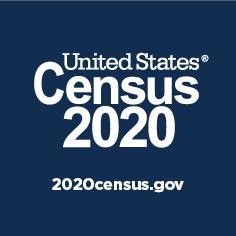 The U.S. Census Bureau has announced it will wrap up the survey Sept. 30, a month sooner than previously expected, raising fears of a national undercount. Online and phone self-response options will close on that date. Census workers who are door-knocking to collect responses must also halt their efforts then.
The U.S. Census Bureau has announced it will wrap up the survey Sept. 30, a month sooner than previously expected, raising fears of a national undercount. Online and phone self-response options will close on that date. Census workers who are door-knocking to collect responses must also halt their efforts then.
This is a big problem in Alaska. Lack of road systems means census materials must be hand-delivered in many rural areas. That work began on March 13, but it was discontinued only three days later due to COVID-19 and did not recommence until May. That puts Alaska significantly behind the curve.
Stand Up and Be Counted, Alaska!
Census data informs how billions of dollars in federal funds are distributed over the next 10 years. Considering Alaska’s economy even before the pandemic – and, given the additional impacts of the pandemic on governments, businesses, organizations, communities and individuals – it is critical for Alaskans to participate in the census. Otherwise, funding for hospitals, health clinics, school-lunch programs, disaster-recovery initiatives, roads, public works and many other vital programs and services will be absorbed by states with better counts and thus higher reported populations.
Unfortunately, Alaska is lagging behind the census national response rate, at just 52% versus 64% for the rest of the country. Anchorage has a self-response rate of 65%, while the Matanuska-Susitna Valley and Kenai Peninsula are at just 37% and 42%, respectively.
 People of color – including and especially Alaska Native and American Indian (AN/AI) people – go uncounted in the U.S. Census in far greater numbers than others. Being undercounted means AN/AI individuals and families don’t receive an equal share of resources, services or political power.
People of color – including and especially Alaska Native and American Indian (AN/AI) people – go uncounted in the U.S. Census in far greater numbers than others. Being undercounted means AN/AI individuals and families don’t receive an equal share of resources, services or political power.
Undercounts of AN/AI peoples mean inadequate funding for the Indian Health Service. In the Cook Inlet region, undercounts translate to less Indian Block Grant funding made available to Cook Inlet Housing Authority for housing and community-development programs; less funding for the many services provided by Cook Inlet Tribal Council; and inadequate funding for health coverage and care available through Southcentral Foundation.
Respond Today: 10 questions, 10 minutes
The important thing to remember is that whether you live in an urban or rural area, you do not need to wait for the census to come to you! All individuals may respond to the census online at my2020census.gov or by calling (844) 330-2020. The census consists of 10 questions and takes about 10 minutes to complete. The deadline to respond is Wednesday, Sept. 30.
If you are AN/AI, how you answer questions 5 and 9 will directly impact how much federal funding goes to tribal programs. The Alaska Federation of Natives has prepared a flyer detailing how best to answer those questions. The flyer may be viewed at nativefederation.org/2020census.
Already responded? Please check in with your friends and family members to make sure they do the same.
For more information, visit 2020census.gov. Alaskans may visit alaskacounts.org for a wealth of census information, including Alaska Native language resources, answers to frequently asked questions, social media toolkits and more.



